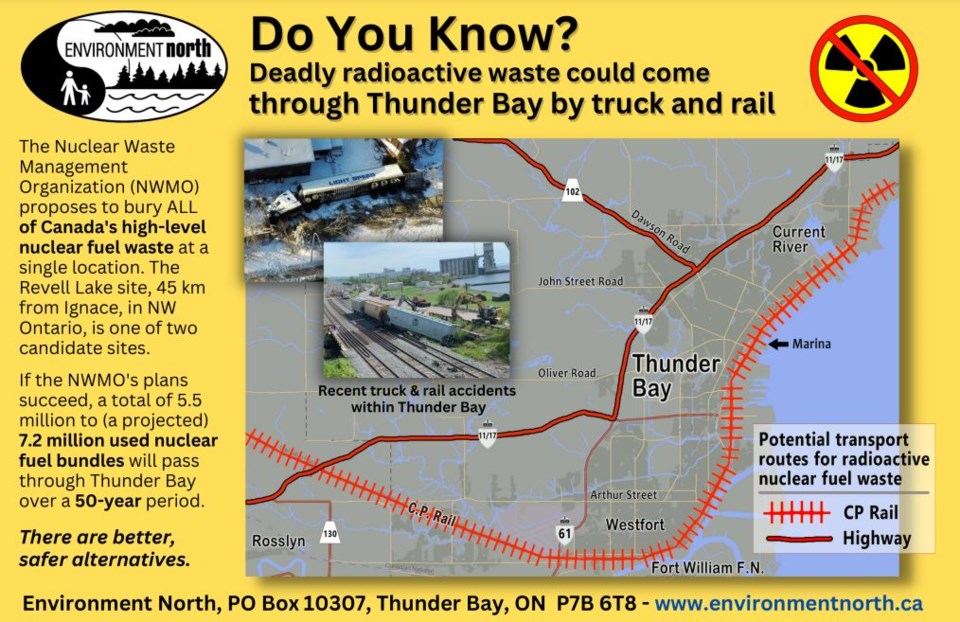THUNDER BAY — Opponents of a proposal to store nuclear fuel waste in Northwestern Ontario have mounted another postcard campaign.
This time they've targeted residents of Thunder Bay by sending 25,000 postcards to local residents warning of the risks that would be posed by transporting used nuclear fuel through the city by road or rail.
The Nuclear Waste Management Organization is considering the construction of a repository deep in the Canadian Shield west of Ignace or in the Municipality of South Bruce near Georgian Bay.
If Ignace is chosen, the Thunder Bay-based citizens group Environment North warns that two to three loads of nuclear waste would be transported daily through Thunder Bay over a period of several decades.
"I can't overstate the risks," said the group's nuclear lead, Dodie LeGassick.
"Although the loads will travel in strong containment casks, gamma radiation will be emitted constantly. If there is an accident causing a breach of a cask or its immersion in water, the results could be catastrophic. Computer-modelled predictions won't help those who could be affected."
Scott Harris, president of Environment North, said the addresses used for the mail-out were chosen carefully.
"If you receive a postcard, it means your home is very near either the proposed highway or railway route for the nuclear fuel waste," he said.
Environment North believes it's not right that only Ignace and Wabigoon Lake First Nation have been asked by NWMO to express their willingness to have a storage site in their area, and maintains that Thunder Bay should have a say in the decision.
It wants residents to sign the postcards and mail them to MPs Patty Hajdu and Marcus Powlowski, asking them to speak against the plan as well.
NWMO hopes to choose the repository location in 2024, but has noted that the shipping of spent fuel would not begin for at least 20 years.
Spokesperson Vince Ponka said Tuesday that no transportation route has been selected as yet, nor has a decision been made as to whether to carry the waste containers only on trucks, partly on rail cars, or some combination of the two.
Ponka said the international consensus is that a deep geological repository is the best way to safely isolate used nuclear fuel, and that two Nordic countries have led the way in that respect.
"Finland is a year-and-a-half away from opening their repository, and Sweden is close behind, but on the front page of the postcard it says 'There are better, safer alternatives'
"The science just doesn't back up that statement."
Opponents including Environment North and We the Nuclear Free North have suggested that nuclear waste is best managed in secure facilities near the reactors where it came from, but Ponka said Finland's storage site is 400 to 500 kilometres away from a nuclear reactor.
"In our case, it's a little over 1,000 kilometres, so it's not all that different from other countries," Ponka said. "But it's important that we have a safe transportation package, and we need to be able to prove to regulators that transportation can be done safely, which it has been done around the world for 60 years."
